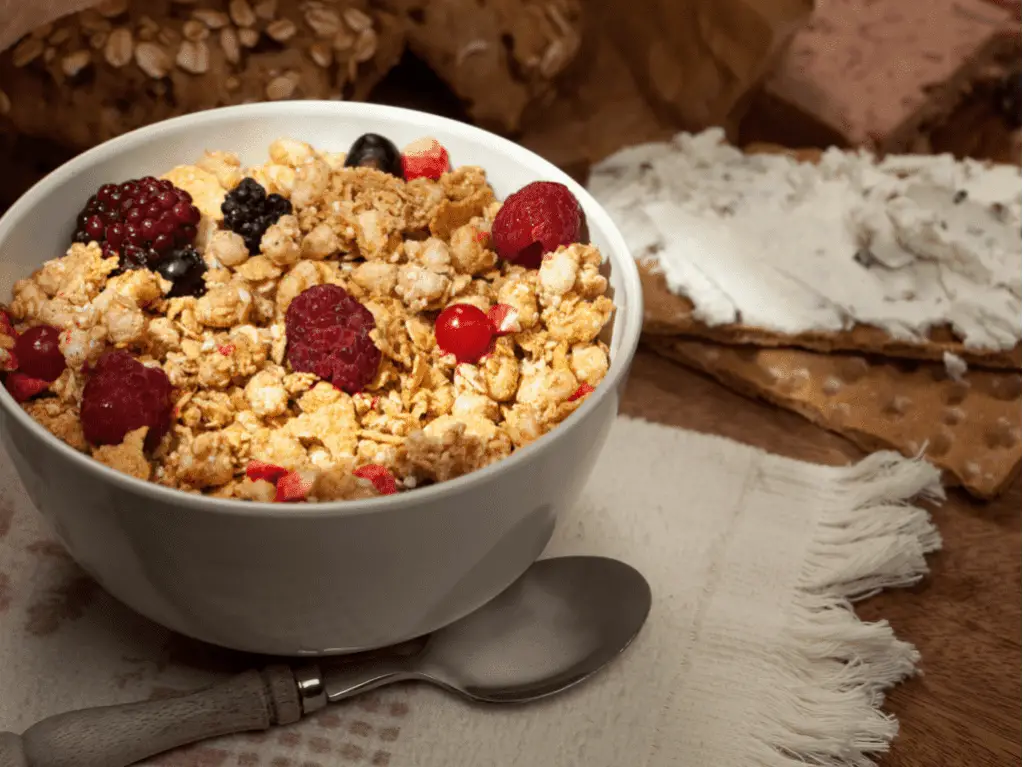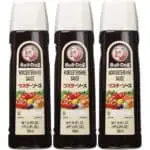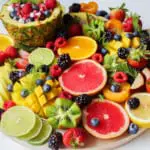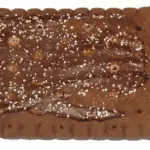The debate over whether cereal can be classified as a salad has raged on for years, dividing families and turning friend against friend. On one side, purists argue that cereal is decidedly not a salad, as it lacks fundamental salad qualities.
The pro-salad cereal camp, however, makes compelling arguments about cereal’s similarities to salad. In this article, we’ll examine both perspectives, looking at the core factors that define salad and soup. After weighing all the evidence, we’ll attempt to answer once and for all: Is cereal a salad?

Defining Salad
To determine if cereal qualifies as a salad, we must first define what a salad is. According to Merriam-Webster dictionary, a salad is:
“A dish consisting of vegetables, fruits, grains, nuts, or other ingredients that are mixed together and served cold or at room temperature, usually with a dressing such as vinegar or mayonnaise.”
Based on this definition, a salad generally has the following qualities:
- Composed of vegetables, fruits, grains, nuts or other foods
- Ingredients are mixed together in a single dish
- Served cold or room temperature
- Dressed with a sauce or dressing, such as vinaigrette
With this framework in mind, let’s analyze how cereal stacks up against these salad criteria.
The Case For Cereal as Salad
At first glance, cereal seems to align with many aspects of the salad definition:
Ingredients
- Cereal is primarily composed of grains such as oats, wheat, corn, rice or quinoa. Grains are specifically mentioned in the dictionary’s definition of a salad.
Serving Temperature
- Cereal is almost always served cold after being mixed with milk or other liquids. This matches the “served cold or room temperature” requirement for salad.
Dressing
- Milk functions as the dressing or sauce for cereal. While milk is thicker than vinaigrette, it coats and dresses the grains in a similar way.
Mixture
- The cereal grains, milk, and any additional toppings get mixed together in the cereal bowl, forming a salad-like combination of ingredients.
With grains as its base, served cold, and dressed with milk, cereal seems to meet the key criteria for classification as a true salad.
The Case Against Cereal as Salad
Despite some apparent similarities to salad, there are some important factors that distinguish cereal from bona fide salad:
Main Ingredient
- Salads typically use vegetables or fruits as the primary ingredients by volume. Cereal relies on grains as the main component.
Texture
- The ingredients in a salad are usually chopped, shredded or mixed to create an variable texture. Cereal consists of uniform-shaped grains floating in milk.
Flavor Profile
- Salads offer a balance of flavors including sweet, sour, bitter, salty. Cereal skews heavily sweet in taste.
Setting
- Salads are more commonly consumed as side dishes or starters to a meal. Cereal is almost exclusively eaten as a breakfast dish.
Preparation
- Making a proper salad requires chopping, mixing, and tossing the ingredients. Cereal just needs milk poured over pre-formed grains.
Based on these points, cereal lacks some core attributes we associate with salad. The usage of grains instead of greens, the sweet uniformity of flavor, and the simplified preparation process differentiate cereal from true, mixed salads.
Cereal as Soup?
If cereal doesn’t quite fulfill the criteria for salad, does it qualify as a type of soup instead? By the dictionary definition, soup is:
“A liquid food especially with meat, fish, or vegetables stewed in stock.”
Again, there are some compelling similarities between soup and cereal:
- Cereal consists of solid grains stewed in the liquid “stock” of milk.
- Like soup, cereal is eaten as a savory meal rather than as a side dish.
However, there are also notable differences:
- Traditional soups involve cooking ingredients in broth. Cereal just requires pouring unheated milk over dry grains.
- Hearty soups contain chunks of vegetables, meat, or beans. Cereal consists of small uniform grains.
- Soup can be eaten hot or cold. Cereal is almost exclusively a cold meal.
So while cereal shares some soup-like qualities, it doesn’t fully satisfy the criteria to be considered an authentic soup. Cereal occupies more of a grey area betweenfirm definitions of salad, soup, or other dish categories.
Cereal Classification
After examining the qualities of salad and soup, cereal doesn’t seem to definitively fit into either established category. We can make arguments for classifying cereal as a type of salad or soup based on some shared characteristics. But key differences remain that distinguish cereal as its own unique food.
Rather than force cereal into a rigid classification, we can conceive of it as a dish that combines certain elements of salad and soup but follows its own rules. The grains, dressing, one-bowl preparation give it salad traits. The liquid mixture of milk and cereal echoed soup. But in the end, cereal is decidedly its own entity.
The Great Cereal Compromise
The heated debate over cereal’s classification may never be fully resolved. Much like discussions over whether a hot dog is a sandwich, opinions remain divided. However, here is a potential compromise:
Cereal is neither a definitive salad nor soup, but it exhibits qualities of both, occupying its own category of cereal. It is a unique dish that marries attributes of salad and soup into an original breakfast meal.
With this view, no side is fully declared “right” or “wrong”. Cereal is not forcibly classified as something it’s not. At the same time, its connections to both salad and soup are recognized. This balanced perspective acknowledges cereal’s singular status while reconciling its similarities to other dishes.
The Verdict
After reviewing all the arguments and evidence, is cereal a salad? Cereal does share some important attributes with salad. However, it lacks other core qualities that define true salad. For that reason, cereal on its own likely does not qualify as a salad. But it deserves acknowledgement as a special dish that blends salad-like traits into something new altogether.
Rather than land definitively on one side of this nuanced debate, we can appreciate cereal’s connections to multiple food categories. We can marvel at its evolution into a beloved breakfast staple. And we can find unity in the shared enjoyment of this singular dish, whether you consider it a salad, a soup, or something else entirely.
No matter which camp you’re in, that first satisfying crunchy bite of cereal and milk reminds us we’re all members of the same tribe – the cereal lovers. And that’s something we can all raise a spoon to.
Key Takeaways:
- Cereal shares some qualities with salad – grains as base, cold, dressed in milk – but lacks vegetables/fruits and variable textures of salad.
- It has soup-like properties – stewed grains in liquid – but differs in preparation and ingredients.
- Cereal occupies a unique in-between category with qualities of both salad and soup but as its own dish.
- Rather than definitively classify cereal, we can appreciate its connections to multiple food categories.
- However you categorize cereal, we can find common ground in the shared enjoyment of the dish.
So in the end, whether you see your morning bowl as a salad or soup or something else entirely – just be sure to savor that first crunchy, creamy bite.
































